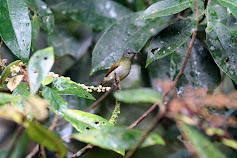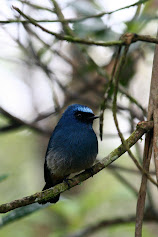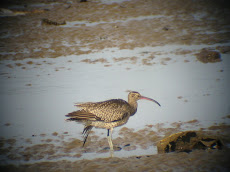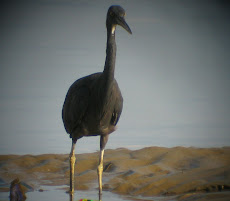 Swift sps..Collocalia esculenta affinis
Swift sps..Collocalia esculenta affinisI was never good in identifying swift when they are airborne or even clinging on the walls just like this one.
Took this at Kinabalu Park office area and wanted to take more pictures but the rain started to come down and it rain the whole day.
At last, I was advise to ask Mr Alim Buin (birder) and a senior park ranger from Kinabalu Park and he confirmed that most of the swift that is flying around the park office are
Glossy Swiflet Collocalia esculenta affinis. Thank you to those who help me to identify.
Happy Birding
.jpg)

.jpg)
.jpg)



















































3 comments:
Sifu Denis, if you ask Ketua Kampung Alim, he will tell you that all swifts at Park HQ are Glossy.
Seemed to have some greenish sheen on the wings, not sure if this could be the Malaysian endemic Bornean Swiftlet or not, better told when it was also seen in flight to check if it had the white belly like the Glossy Swiftlet.
At least it rules out species with a pale rump, but both Mossy-nest and "lowi" Black-nest also lacks the pale rump.
Actually, only the Glossy and Bornean would eventually breed outside caves in the open, but Bornean is never found nesting yet, and in fact it is barely even found itself, also probably due to the difficulty to identify it from the field, the Bornean Swiftlet is so far only known at a few hills of Sabah and extreme east Sarawak, making it temporary a Malaysian endemic, there are chances that it is also found in Brunei and Kalimantan?
The other swiftlets nest in caves and when sitting in their caves, you can just study the differences of their nest and it helps you to identify them, white-nest, black-nest and mossy-nest, all reflected in their names, but the white-nest is often split to two nowadays in East Malaysia, including the coastal Germain's and inland Edible-nest/White-nest. They are very very challenging to be identified in the field.
Post a Comment